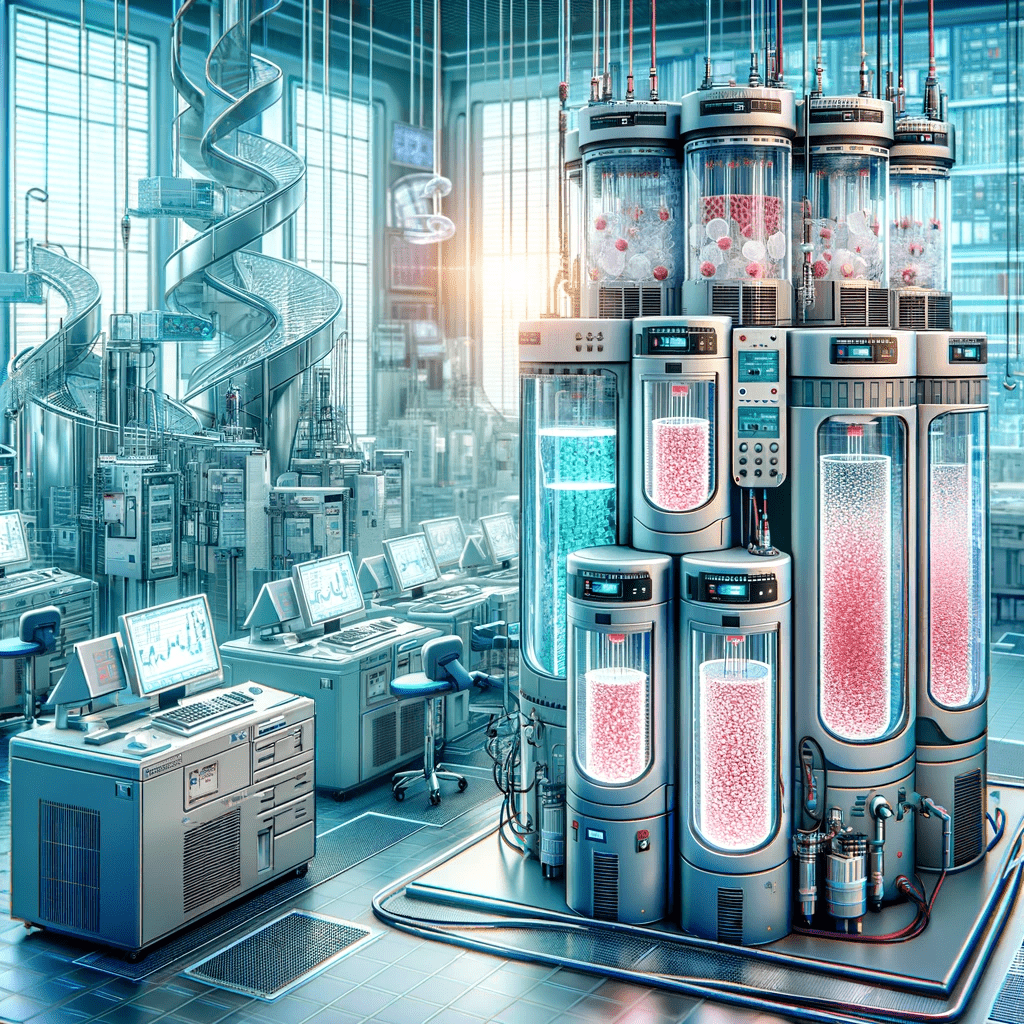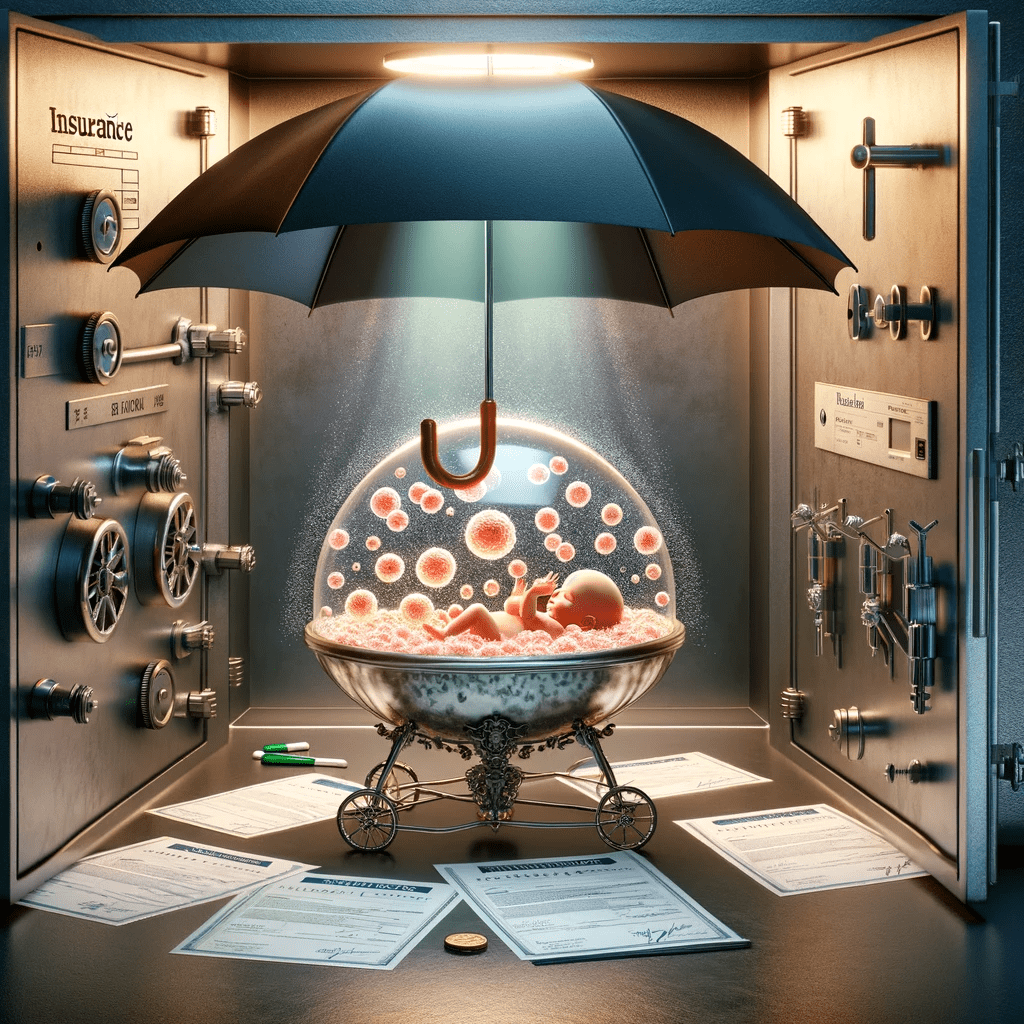
Storing Newborn Stem Cells: As you’re eagerly awaiting the arrival of a newborn, it’s worth considering the future health possibilities that stem cell storage can offer.
You’re about to make a world of difference for your family or others in need by understanding the essentials of newborn stem cell storage. This guide will walk you through the key insights, from the collection process to the storage methods, and the significant benefits of banking these precious cells.
You’ll learn about the differences between public and private banking, what insurance may cover, and financial assistance programs available to you.
With these 12 key insights, you’ll be equipped to make informed decisions about preserving a resource that could potentially save lives and contribute to medical advancements.
Let’s explore the future of health together, one stem cell at a time.
Key Takeaways
- Cord blood banking involves collecting blood from the umbilical cord and placenta after childbirth.
- Stem cells stored from newborns are a perfect genetic match for the donor, reducing the risk of transplant rejection.
- Cryogenic freezing is the most reliable option for long-term preservation of stem cells.
- Personalized medicine and regenerative medicine are future trends that could benefit from the use of stored stem cells.
Storing Newborn Stem Cells: Understanding Cord Blood Banking
You’ll often hear about cord blood banking as a vital option for preserving your newborn’s stem cells for potential future medical use. This proactive measure involves collecting the blood from the umbilical cord and placenta immediately after childbirth—a process that’s both non-invasive and safe for both mother and child. The blood is then cryogenically stored in specialized facilities known as cord blood banks. These banks meticulously categorize and preserve the stem cells under stringent conditions to maintain their viability and potential therapeutic utility.
Analyzing the technical aspects, cord blood is rich in hematopoietic stem cells (HSCs), which are progenitors capable of developing into various types of blood cells. This characteristic renders them invaluable for treating a spectrum of diseases, including certain cancers, blood disorders, and immune deficiencies. The process of cord blood banking encompasses a series of steps: collection, transportation, processing, and cryopreservation.

In the collection phase, it’s crucial to use a sterile technique to minimize the risk of contamination. During transportation, maintaining the integrity of the sample is paramount, requiring temperature-controlled conditions. Once at the cord blood bank, the blood undergoes processing to isolate the stem cells, often incorporating a method known as volume reduction. This step is accompanied by rigorous testing to ensure cell viability and detect any potential abnormalities. The final stage, cryopreservation, involves a controlled-rate freezing protocol to preserve the stem cells’ functionality over an extended period.
In serving others, it’s imperative to understand that the decision to bank cord blood should be informed by recognizing the technical nuances and potential applications in regenerative medicine. This foresight can significantly contribute to advancing healthcare provisions and improving patient outcomes. Moving forward, let’s delve into the benefits of newborn stem storage, where the impact of this decision becomes even more apparent.
Storing Newborn Stem Cells: Benefits of Newborn Stem Storage

Storing your newborn’s stem cells offers the potential for lifesaving treatments in the event of certain medical conditions. By preserving these cells immediately after birth, you’re ensuring that a genetically unique resource is available, one that could be pivotal in treating or managing future diseases.
The advantages of newborn stem cell storage are numerous and are grounded in the biological versatility of stem cells. These cells have the remarkable ability to differentiate into a variety of cell types, making them invaluable in regenerative medicine. The following table outlines key benefits:
| Benefit | Description |
|---|---|
| Regenerative Medicine | Stem cells can transform into different cell types, enabling tissue repair and regeneration. |
| Genetic Match | Stored stem cells are a perfect match for the donor, reducing the risk of transplant rejection. |
| Potential for Future Therapies | Ongoing research may expand the range of treatable conditions. |
| Immediate Availability | Stored stem cells are readily accessible, eliminating the search for a compatible donor. |
It’s important to understand that the field of stem cell therapy is continually evolving. Current research is expanding the list of diseases and conditions that can potentially be treated with stem cells. By choosing to store your newborn’s stem cells, you’re not only taking a proactive step in safeguarding their health but also contributing to the broader scope of medical advancements that serve others.
Storing Newborn Stem Cells: Collection Process Explained

Regarding the collection of your newborn’s stem cells, it’s essential to understand the steps involved to ensure a safe and successful process. Typically, this procedure occurs immediately after birth, designed to be non-intrusive and painless for both mother and child.
The process commences with the clamping and cutting of the umbilical cord. A trained healthcare professional then uses a sterile needle to extract blood from the cord, which is rich in hematopoietic stem cells. These cells are capable of developing into various blood and immune system cells, providing potential treatments for a range of conditions.
Precision is key during this procedure; the volume of blood collected can influence the number of stem cells obtained. The collection kit, which is usually provided by the stem cell storage company, must be at hand in the delivery room to avoid any delays. It’s imperative that the kit contains all necessary components, such as anticoagulant to prevent clotting and ensure cell viability.
Sterility is paramount to prevent contamination. The healthcare provider must adhere to aseptic techniques throughout the extraction to maintain the integrity of the stem cells. After collection, the blood is sealed in a sterile bag, labeled, and placed in a protective container.
The entire process requires coordination with the birthing facility and the storage facility to ensure that the collected cells are transported and processed in a timely manner. The cells must be processed within a specific time frame to maximize their preservation and future usability.
Transitioning from collection to processing, the stem cells are then subjected to a series of meticulous steps to prepare them for long-term storage.
Storing Newborn Stem Cells: Processing Stem Cells

You must ensure the isolation process adheres to stringent purity standards to maintain the integrity of newborn stem cells.
Precise temperature control is critical for preserving cellular structures and function during storage.
Assessing viability through established methods is essential to guarantee the usability of stem cells for future therapeutic applications.
Isolation Purity Standards
Within the intricate process of extracting stem cells from newborn tissues, it’s essential that you adhere to stringent isolation purity standards to ensure the viability and utility of the stored cells. High purity levels are critical for minimizing the risk of contamination and maximizing the potential therapeutic outcomes.
Here are the key components you must consider:
- Pre-Processing Assessment: Rigorous evaluation of the tissue source prior to processing to determine the quality and quantity of viable stem cells.
- Contaminant Elimination: Use of advanced filtration and separation techniques to remove impurities, including dead cells and plasma remnants.
- Post-Processing Verification: Implementation of standardized assays to verify the purity and potency of the isolated stem cells before cryopreservation.
Adhering to these standards is imperative for the provision of high-quality stem cells for future therapeutic needs.
Temperature Control Importance
Maintaining optimal temperature is crucial as you process newborn stem cells to preserve their integrity and function. Precise temperature control mitigates the risk of cellular degradation, ensuring the highest viability for therapeutic applications. Your meticulous attention to this detail reflects your commitment to service and the well-being of others.
Here’s an analytical breakdown of the consequences of temperature deviations:
| Temperature Deviation | Impact on Stem Cells |
|---|---|
| Above Optimal Range | Accelerated Cell Death |
| Below Optimal Range | Reduced Cell Functionality |
| Short-Term Fluctuations | Stress-Induced Mutations |
| Long-Term Deviations | Diminished Regenerative Potential |
| Optimal Temperature Maintenance | Preservation of Cellular Integrity |
Each entry in the table underscores the necessity of steadfast vigilance in temperature regulation during stem cell processing. Your efforts here are paramount in safeguarding a precious gift that could transform lives.
Viability Assessment Methods
As you process newborn stem cells, it’s crucial to employ reliable viability assessment methods to ensure their therapeutic efficacy. These methods are pivotal in determining whether the stem cells will be potent and functional after storage.
Consider the following techniques:
- Flow Cytometry: This allows for the precise measurement of cell viability by quantifying live, dead, and apoptotic cells through fluorescent markers.
- Colony-Forming Unit (CFU) Assay: It assesses the stem cells’ ability to proliferate and differentiate, indicating their potential to regenerate tissue effectively.
- Trypan Blue Exclusion Test: A dye exclusion method to count viable cells, as live cells exclude the dye, while dead cells absorb it, providing a quick viability check.
Understanding these assessment methods paves the way to compare how different storage methods might impact cell viability.
Storing Newborn Stem Cells: Storage Methods Compared

As you explore storage options for newborn stem cells, consider the cryogenic freezing process and its efficiency.
Assess the importance of maintaining consistent low temperatures to ensure cellular integrity over time.
Moreover, you’ll need to evaluate the safety of container materials, as they play a crucial role in preserving the stem cells’ viability.
Cryogenic Freezing Efficiency
Cryogenic freezing stands as your most reliable option for long-term preservation of newborn stem cells, offering superior stability over other storage methods.
To understand why, consider the following:
- Uniform Temperature Control: Cryogenic storage ensures a consistent environment at temperatures around -196°C, mitigating the risks of thermal fluctuations that could compromise cell integrity.
- Minimized Biological Activity: At cryogenic temperatures, biological activity, including enzymatic reactions that could degrade cells, is virtually halted, ensuring cellular components remain unaltered.
- Long-Term Viability: Studies indicate that cryopreserved stem cells maintain their functionality and viability for decades, providing a dependable resource for future therapeutic applications.
Recognizing these factors is vital, as the next section will delve into the importance of temperature stability in preserving the potential of newborn stem cells.
Temperature Stability Importance
You’ll find that maintaining a consistent temperature is critical when comparing storage methods for newborn stem cells, as even minor fluctuations can significantly impact cell viability. This underlines the necessity for precise, reliable storage solutions to ensure the long-term preservation and functionality of these cells. Here’s a comparison of two common storage methods:
| Storage Method | Temperature Stability |
|---|---|
| Liquid Nitrogen Tanks | -196°C, Highly stable |
| Mechanical Freezers | -150°C to -190°C, Less stable |
Liquid nitrogen tanks offer superior temperature consistency critical for stem cell preservation. In contrast, mechanical freezers are prone to slight temperature variations, which could compromise the quality of the stem cells. As we delve into storage considerations, remember that the container material also plays a pivotal role in safeguarding these precious cells.
Container Material Safety
Container materials, which come into direct contact with your newborn’s stem cells, are as crucial as temperature stability in determining the cells’ integrity during long-term storage. You must consider:
- Biocompatibility: Materials used should be non-toxic and shouldn’t trigger any adverse biological response.
- Permeability: Select containers that offer excellent barrier properties to prevent contamination and ensure cell viability.
- Durability: The rigidity and resilience of the container must withstand the rigors of cryogenic temperatures without compromising the sample.
These factors are instrumental in maintaining the purity and usability of stem cells for future therapeutic applications. Ensuring container material safety is pivotal in your mission to provide a potentially lifesaving resource.
Next, let’s delve into long-term preservation techniques to further secure the viability of these precious cells.
Storing Newborn Stem Cells: Long-Term Preservation Techniques

To ensure your newborn’s stem cells retain their viability for potential future therapies, it’s essential to understand the three primary techniques for long-term preservation. These methods are designed to maintain the integrity and functionality of stem cells over extended periods, often decades, until they’re needed for medical use.
The first technique is controlled-rate freezing, a process where stem cells are cooled at a controlled pace, usually with the aid of cryoprotective agents (CPAs) to prevent ice crystal formation, which could damage the cells. Next, vitrification involves an ultra-rapid cooling process that turns the cellular environment into a glass-like state, avoiding ice crystal formation altogether. Lastly, encapsulation-dehydration is a method where stem cells are encapsulated in a protective medium and slowly dehydrated before cooling, which minimizes damage during the freezing and thawing process.
Each preservation method has its specific applications and considerations, as outlined in the table below:
| Technique | Description | Key Considerations |
|---|---|---|
| Controlled-rate Freezing | Cooling cells at a controlled pace | Requires precise temperature control |
| Vitrification | Ultra-rapid cooling to a glassy state | Demands high concentration of CPAs |
| Encapsulation-Dehydration | Encapsulation in a medium and dehydration | Critical to manage dehydration rate |
You must select a technique that aligns with the intended use and potential future applications of your newborn’s stem cells. Preservation efficacy, potential for cell recovery, and stability over time are critical factors to consider. Make your decision with a long-term perspective, understanding that the chosen method will serve as the guardian of your child’s biological resources, possibly supporting their health for a lifetime.
Storing Newborn Stem Cells: Registration and Initial Fees

Once you’ve selected a preservation method for your newborn’s stem cells, you’ll need to register with a storage facility and pay the initial fees. This process is critical to ensure the viability and security of the stem cells, which may serve as a crucial resource for medical treatments in the future.
The registration and initial fee structure are typically straightforward but vary among facilities. As a caregiver or parent, you should be aware of several key components:
- Enrollment Fee: This is a one-time charge that covers the administrative costs associated with setting up your newborn’s stem cell account. It may also include the collection kit, transportation of the collected material, and processing of the stem cells.
- Processing Fee: A technical fee for the extraction, testing, and cryopreservation of the stem cells. This fee ensures that the cells are stored in compliance with industry standards and best practices for long-term viability.
- Storage Fee: An upfront cost that covers a predetermined period of storage, often ranging from one year to lifetime storage options. This fee is typically structured as an annual payment but may be offered at a discounted rate if paid in a lump sum for extended periods.
Analyzing the cost structure is imperative for budgeting and understanding the financial commitment involved in stem cell preservation. Each fee is a component of the total cost and reflects the meticulous care and technical expertise required to maintain the integrity of your newborn’s stem cells.
Transitioning from the initial financial commitment, it’s equally important to understand the detailed *breakdown of cord blood storage costs* to make informed decisions and plan for potential future health care needs.
Storing Newborn Stem Cells: Breakdown of Cord Blood Storage Costs

Understanding the breakdown of cord blood storage costs is essential as you’ll encounter various expenses beyond the initial fees outlined earlier. These costs include collection, processing, and the ongoing storage fees necessary to maintain the viability of the stem cells over time.
Firstly, collection costs cover the medical team’s expenses for obtaining the cord blood immediately after childbirth. This step requires precise timing and specialized equipment, which contributes to the overall expense.
Following collection, the cord blood undergoes processing to isolate and preserve the stem cells. This stage demands advanced technology and meticulous laboratory work, leading to a significant portion of the cost.
The bulk of the expenses often lies in the long-term storage of these cells. Storage fees are typically charged annually or as a one-time payment for a longer duration, such as 18-25 years. These fees are for the continuous cryopreservation of the cord blood in controlled environments, which ensures the stem cells remain viable for future medical use. It’s paramount that the storage facility adheres to strict regulatory standards, which may influence the cost.
Moreover, some banks offer additional services such as genetic testing of the stem cells, which incurs extra charges. It’s advisable to thoroughly understand these ancillary services and assess their value to your family’s needs.
In choosing the right cord blood bank, consider not only the upfront costs but also the long-term financial commitment. It’s a significant investment in your child’s health, and understanding the cost structure will aid in making an informed decision.
As you evaluate these costs, it’s important to weigh the differences between public and private banking, which will be discussed in the next section.
Storing Newborn Stem Cells: Public Vs. Private Banking Differences

When deciding where to bank your newborn’s stem cells, you’ll need to choose between a public bank and a private bank, each with distinct differences in service and purpose. Your decision can significantly impact the potential uses of these cells, so it’s essential to understand the key variations:
- Accessibility: Public banks store donated stem cells for the benefit of the general public and for research purposes. If you donate your baby’s stem cells to a public bank, they become part of a registry and are accessible to anyone in need of a matching transplant. It’s altruistic, as you’re contributing to a communal resource that can save lives. In contrast, private banks reserve the collected stem cells exclusively for your family’s use. This ensures that if a family member requires a stem cell transplant in the future, your banked cells are readily available.
- Cost: There are significant cost differences. Public banking is typically free of charge because you’re donating the cells for public use. However, private banking involves a fee for collection, processing, and an ongoing cost for storage. This expense reflects the personalized service and the guarantee that the cells will be held for your family’s private use.
- Regulations and Standards: Both public and private banks are regulated, but the standards may vary. Public banks must adhere to stringent guidelines set by national health authorities to ensure the broadest utility of the donated cells. Private banks also follow regulatory standards, but their procedures may differ since the cells are intended for personal use. It’s vital to verify that the private bank you’re considering is accredited by relevant authorities to maintain high-quality storage conditions.
Analyzing these aspects will help you make an informed decision that aligns with your family’s values and expectations for future healthcare needs.
Storing Newborn Stem Cells: Insurance Coverage Options

As you consider insurance policies for newborn stem cell storage, scrutinize the policy inclusions to ensure they align with your expectations for stem cell use.
Assess premium considerations carefully, weighing the cost against the potential financial burden of future medical treatments.
Be mindful of benefit limitations, as they dictate the extent of coverage and may impact your decision-making process.
Policy Inclusions
You’ll find that several insurance policies offer coverage options for the storage of newborn stem cells, but the extent of coverage can vary greatly. When evaluating policies, consider the following:
- Coverage Limits: Assess the maximum payout provided for stem cell storage. It’s essential to understand the financial boundaries set by your insurance plan.
- Term of Coverage: Determine the length of time for which stem cell storage is covered. Some policies may limit coverage to a certain number of years, while others might offer lifetime storage.
- Exclusions and Riders: Be aware of any exclusions that may apply. Certain conditions or additional riders might be necessary to extend coverage to include stem cell storage.
Carefully analyze these factors to ensure the chosen insurance policy meets your needs in contributing to the well-being of others.
Premium Considerations
Regarding your family’s budget, it’s important to weigh the cost of insurance premiums against the potential benefits of newborn stem cell storage coverage. Analyze the actuarial value of policies, considering the likelihood of requiring access to these cells.
Insurers may offer different tiers of coverage, with premiums reflecting the comprehensiveness of the plan. It’s critical to scrutinize the fine print for exclusions or limitations that could affect future utility. Also, consider whether premiums are fixed or subject to increases.
Insurance for stem cell storage is a specialized field, and it’s advisable to consult with a knowledgeable agent who understands the nuances of this type of coverage and can guide you to make an informed decision that aligns with your altruistic goals.
Benefit Limitations
When choosing insurance coverage for newborn stem cell storage, it’s essential to understand the policy’s benefit caps and what they specifically entail for your family.
- Maximum Coverage Limit: Ascertain the highest amount the policy will pay for stem cell retrieval and storage. This cap influences the volume of stem cells you can afford to bank, which may impact their potential use in future treatments.
- Scope of Coverage: Analyze whether the policy includes both processing and long-term storage fees. Some plans may cover initial processing but not the annual storage costs.
- Exclusions and Restrictions: Scrutinize the fine print for any conditions or treatments that aren’t covered. Understand the limitations on the usability of the stem cells, as some policies may not cover experimental or certain types of therapies.
Storing Newborn Stem Cells: Financial Assistance Programs

Exploring financial assistance programs can significantly reduce the costs associated with storing your newborn’s stem cells. As you’re committed to the well-being of others, it’s crucial to understand that these programs are designed to aid families who recognize the potential lifesaving benefits of stem cell banking but may face financial constraints.
In analyzing these programs, you’ll find they vary by company and region, but often include income-based assistance, military discounts, prepayment plans, and subsidies for families with a history of certain medical conditions. It’s important to scrutinize the eligibility criteria meticulously, as they’re typically stringent and require thorough documentation to ensure that assistance is allocated to those most in need.
Moreover, some cord blood banks collaborate with charities and non-profit organizations to offer grants or funding to offset storage costs. These partnerships reflect a commitment to increasing accessibility to stem cell therapies and may provide a more substantial financial reprieve than individual company programs.
To leverage these financial assistance opportunities, you must initiate contact with the cord blood bank’s customer service department and inquire about available options. It’s advisable to prepare a detailed account of your financial situation and any medical history that underscores the necessity for such assistance. Be prepared to fill out applications and provide documentation as required.
Remember that while these programs are altruistic in nature, they function within the constraints of available resources. Therefore, it’s imperative to apply as early as possible to ensure consideration before funds are fully allocated. By doing so, you’re not only stewarding your resources wisely but also ensuring the potential for future medical interventions that could serve your child or others in need.
Storing Newborn Stem Cells: Future Trends in Stem Cell Use

As you consider the financial aspects of stem cell storage, it’s also essential to look ahead at how emerging trends in stem cell research could expand treatment options for your child in the future. The field of stem cell therapy is rapidly evolving, with breakthroughs hinting at a future where numerous conditions may be treatable.
To give you a clearer picture, let’s examine three key trends:
- Personalized Medicine: The future points towards therapies tailored to an individual’s genetic makeup, with stem cells playing a pivotal role. By using your child’s own stored stem cells, medical practitioners aim to minimize the risk of rejection and optimize treatment efficacy.
- Regenerative Medicine: Research is progressing towards the regeneration of damaged tissues and organs. In the coming years, stem cells may be used to grow new tissues in a lab, which can then be transplanted to replace diseased or injured organs in your child, potentially eliminating the need for organ donors.
- Gene Editing: Techniques like CRISPR-Cas9 have opened the door to correcting genetic defects at the cellular level. Stored stem cells could be genetically modified to treat specific genetic disorders, offering a proactive approach to your child’s health management.
Frequently Asked Questions
Can Stored Newborn Stem Cells Be Used for Treating Genetic Conditions in the Child’s Biological Siblings or Parents?
You’re considering the therapeutic potential of stored newborn stem cells; they can indeed treat genetic conditions in a child’s siblings or parents, offering a selfless service by potentially healing inherited familial diseases.
How Might Changes in Laws and Regulations Affect the Storage and Use of Newborn Stem Cells in the Future?
You’ll need to monitor evolving policies, as future laws may impose stricter controls or broaden usage permissions for newborn stem cell storage, directly impacting your capacity to serve patients and their families.
What Are the Ethical Considerations Surrounding the Donation of Newborn Stem Cells to Public Banks for Research or Treatment of Others?
You’re weighing the moral impacts of donating your newborn’s stem cells. Consider consent, potential exploitation, and privacy issues before deciding to contribute to public banks for altruistic research or life-saving treatments.
How Is the Privacy of the Donor Family Protected Throughout the Storage and Potential Future Use of Newborn Stem Cells?
You’ll find donor families’ privacy safeguarded by stringent confidentiality protocols, anonymizing personal data before storage and use, ensuring only relevant medical information accompanies the stem cells for research or treatment purposes.
Are There Any Psychological Impacts on Children or Families Knowing That Their Stem Cells Are Stored, and How Do Storage Facilities Address These Concerns?
You may experience mixed emotions knowing your child’s stem cells are stored. Facilities typically offer counseling to address these concerns, ensuring families receive support and understand the potential benefits of stem cell storage.








